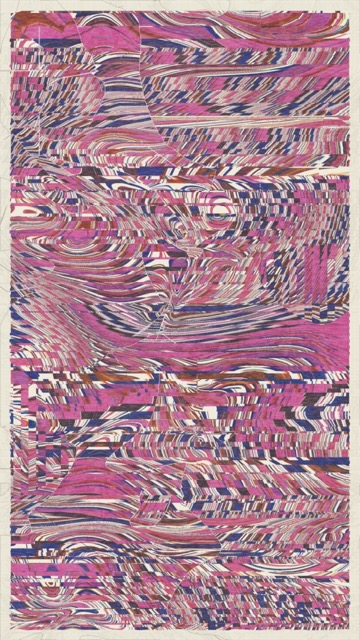Generative artist William Mapan’s latest collection, “Distance,” sold out in less than 24 hours despite launching in the middle of a very weak NFT market.
From his early long-form generative series “Dragons” on the Tezos blockchain to the highly sought-after “Anticyclone” ArtBlocks collection that currently commands a 5 ETH floor, Mapan has a unique way of capturing the hearts and minds of collectors.
But many people in the public still don’t understand what generative art even is. Mapan has a unique way of explaining the often misunderstood genre by boiling it down to a piece of paper, a crayon and a die.
“It can be really hard to explain but usually the way I explain is to put away the code, put away the blockchain, put away everything. Just take a piece of paper, a crayon and dice. Imagine drawing two by two boxes on that paper, so four boxes total. You then throw the dice — if the roll shows up as a three or below, you draw a square; if the dice shows four or above, you draw a circle into one of the boxes.
“You just made an algorithm; you just made a set of rules and introduced some randomness in there. That’s basically what generative art is, you build a set of rules, an algorithm and then introduce randomness. Then you try to control that part of the space.
“With the grid of two by two, the parameter of space is very reduced, but as soon as you expand to different parameters, you can get many different outputs. Imagine a 10 by 10 box and imagine you have multiple shapes like a circle, triangle, square, star or whatever. You just write down your rules and just follow them, and that’s it.”
Fine line technique
Mapan’s work straddles the line between appearing as if it’s physically or digitally made, a technique other artists such as Tyler Hobbs and Emily Xiu have a reputation for.
“I like to activate senses, feelings and memories. My hope is that when you see my work, it sparks curiosity. You might think my art reminds you of something in one way, but in another way, you’re thinking there are so many shapes that it’s impossible that someone made it by hand,” says Mapan.
“I hope that it connects with people in their memories, especially like the last series that I released last week, “Distance.” I want people to see themselves traveling, and they remember, ‘Oh, I was on this plane when I saw this kind of…
Click Here to Read the Full Original Article at Cointelegraph.com News…

